In their design thesis project, students Drakos Michail & Stampouli Elisavet, develop an architectural proposal for the design and the curation of a museum space in the city of Eleusis that aims to narrate the stories of the city by blending antiquity and the industrialization era, as the most defining periods of its history.
Eleusis has a long history, extending from antiquity to the present day. This thesis aims to connect two of the most defining periods of its history: antiquity and the industrialization era.
In 2011, a plan was announced to create a new museum that would combine the two significant eras. It will be built on an industrial site adjacent to the archaeological area, which is home to the ruins of the Old Oil Mill and the BOTRYS Factory.

The signs of abandonment are visible on the buildings. However, thanks to the Aeschylean Festival, which is hosted in part of the Old Oil Mill, some sections of the factory have been restored.
As a starting point, the decision is made to preserve the shells of the buildings that have withstood the passage of time, while keeping the traces of the demolished ones, reminding us of the industrial past.

A new metal frame is placed within the shells that will house the museum spaces, supporting also the old masonry. In this way, the industrial character of the site is preserved while establishing a dialogue with its new function.
The recent re-exhibition of the current Archaeological Museum of Eleusis served as the inspiration for our own museological program.
The museum’s exhibition follows the days of the Great Mysteries, with each hall dedicated to one or more of them.
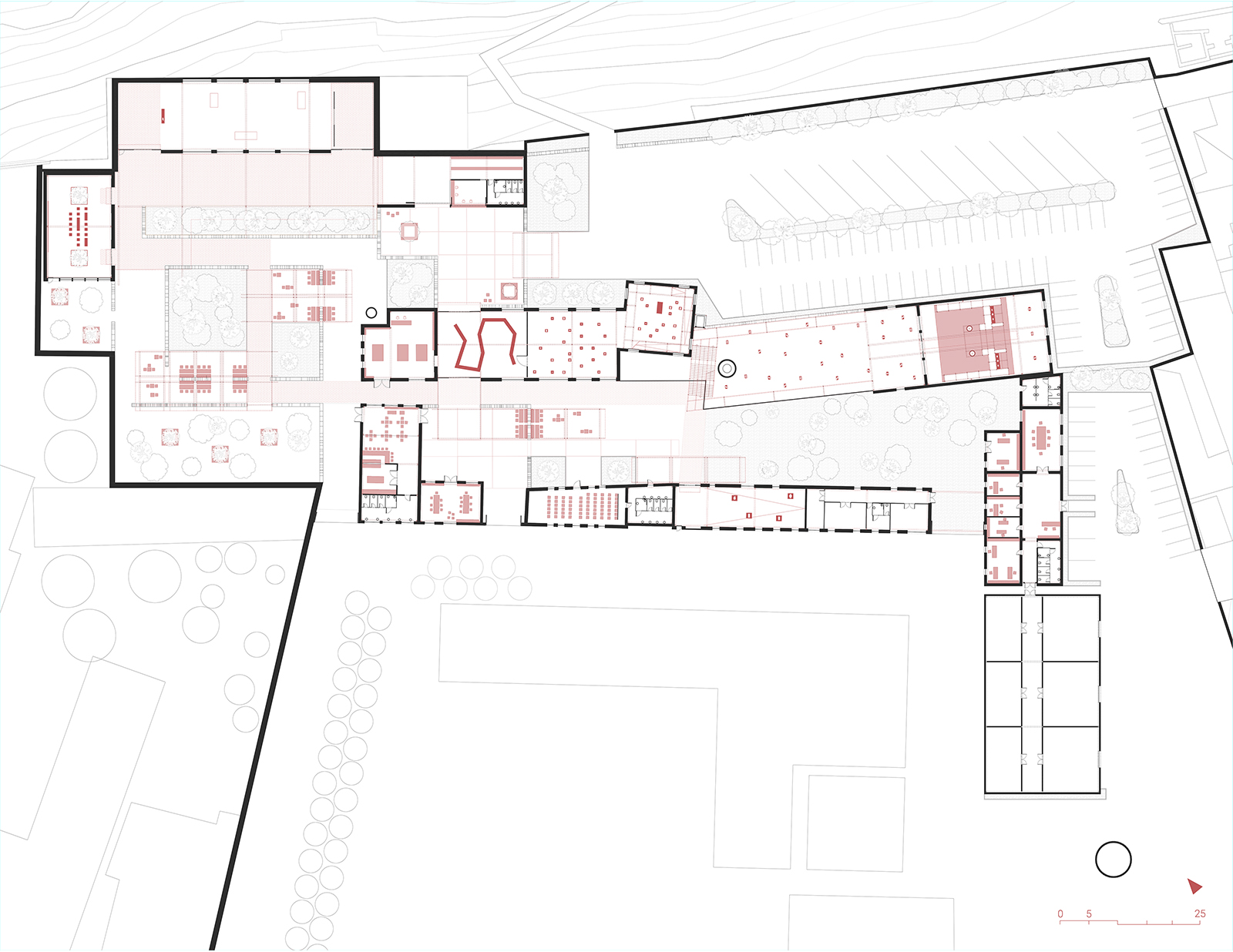
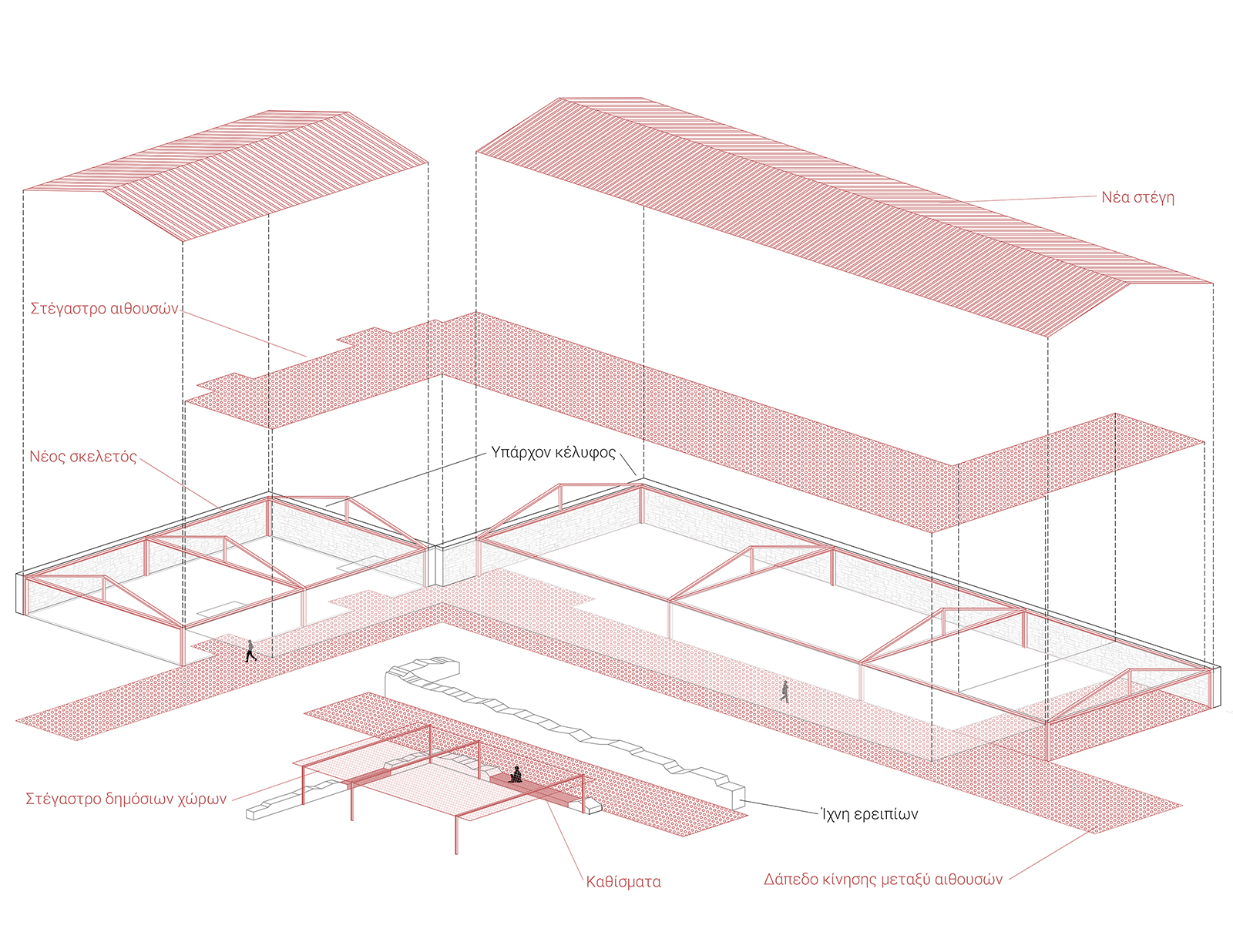
After placing the halls in the space, a passage is created between the entrance and the plazas, allowing movement to develop between them.
To connect the museum halls, the metal vocabulary is expanded. Perforated metal flooring is added to the frame, as a circulation facilitator between the halls. Similarly, this material is used for the canopies at the entrances. For vertical connections, stairs and bridges are added.
This vocabulary is not limited to the museum spaces but also appears in the exterior areas, serving as resting points, defined by the traces of the demolished buildings.
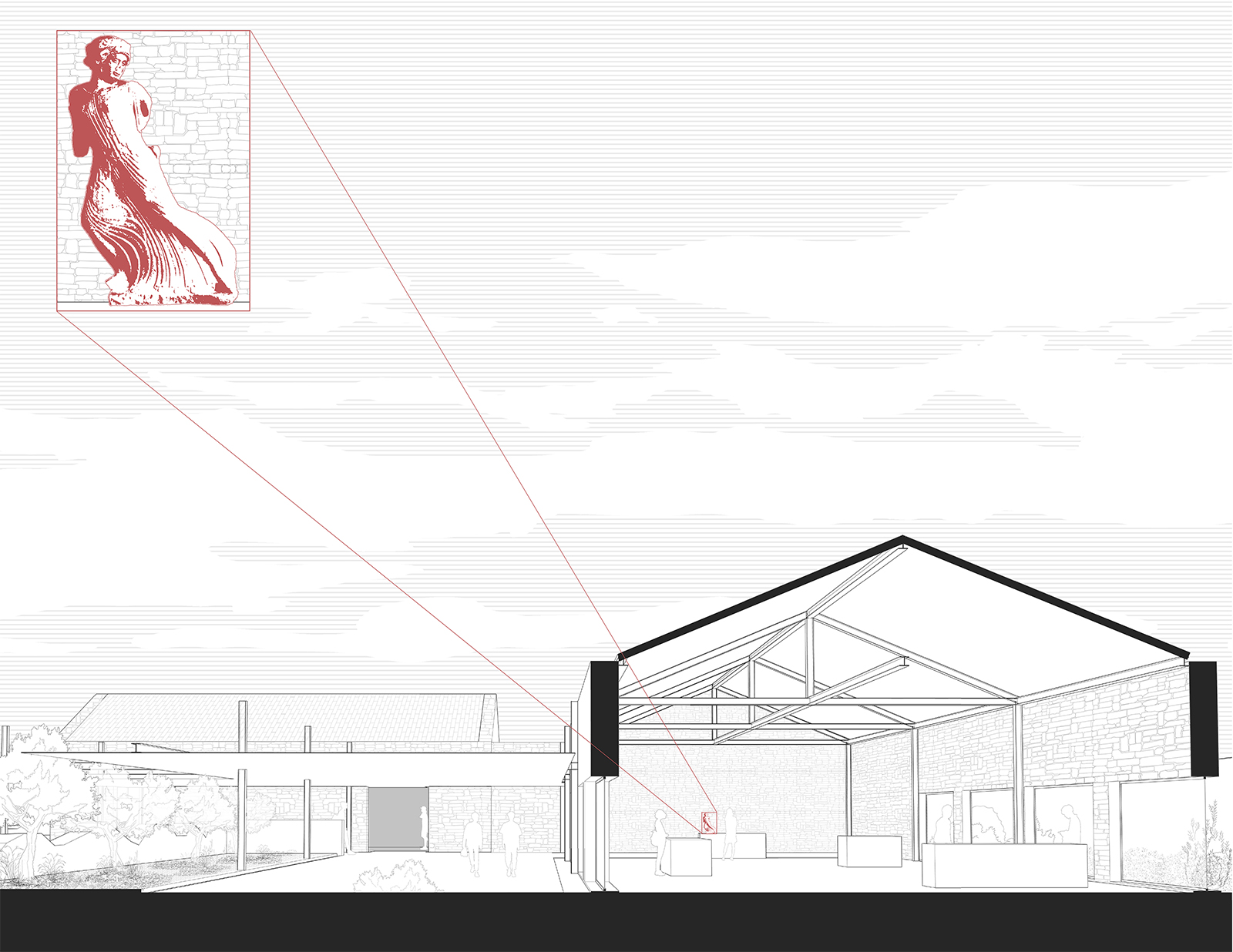
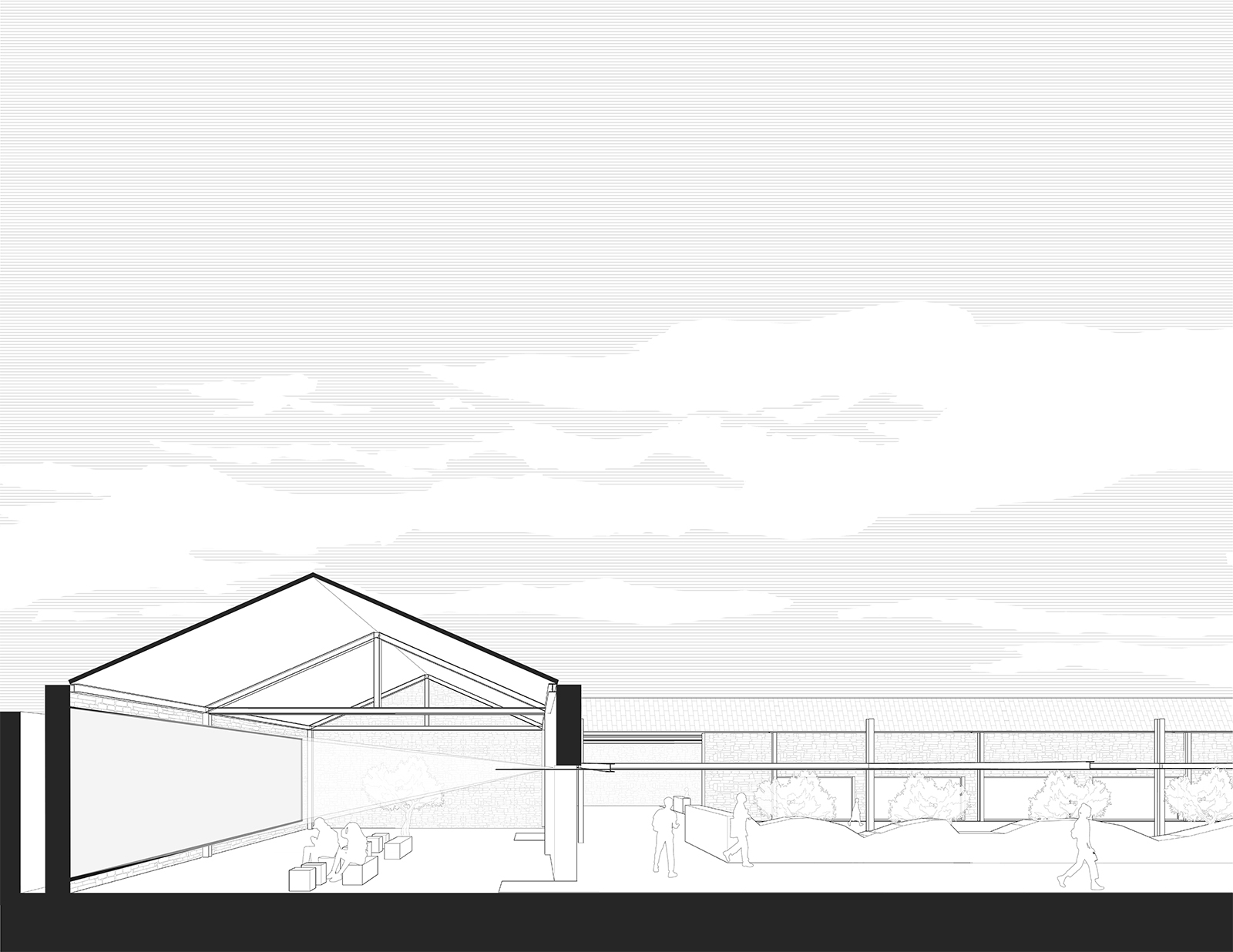
A tour of the Museum of the City of Eleusis:
Upon entering the museum, visitors find themselves in a semi-outdoor space. To their right is the first hall, dedicated to the first days of the Mysteries, during which the gathering and purification of the initiates took place.
Through the semi open space, visitors are led to the second hall, dedicated to the 4th day, which focused on self-concentration. A quiet environment prepares them for the following day, which marks the beginning of the procession to Eleusis.
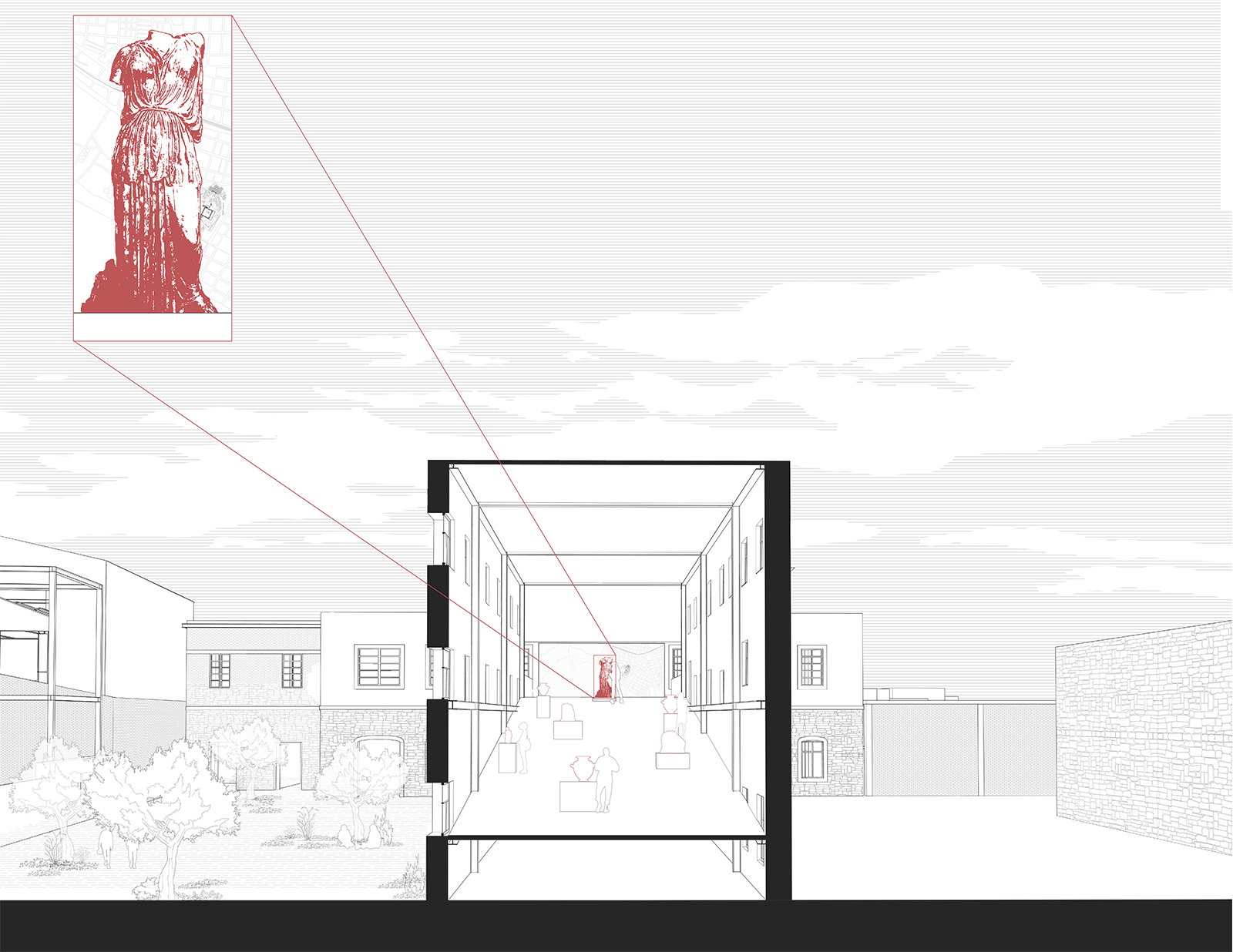
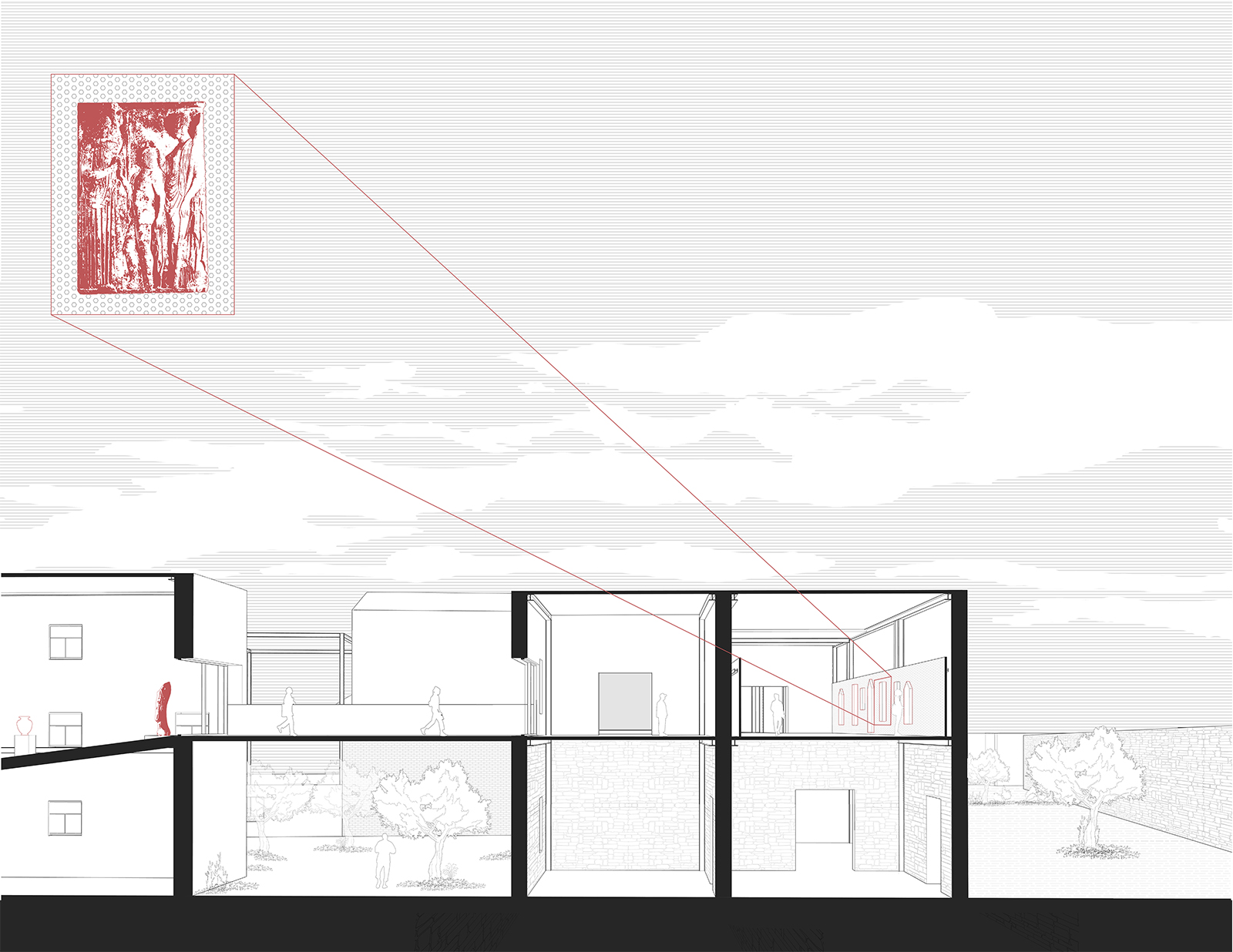
The outdoor route begins. Visitors follow the perforated metal pathway leading to the halls that represent the events occurring after leaving Athens.
The procession to Eleusis unfolds on the 5th day. This hall is elongated with an upward trajectory and houses findings discovered along Iera Odos—the route to Eleusis.
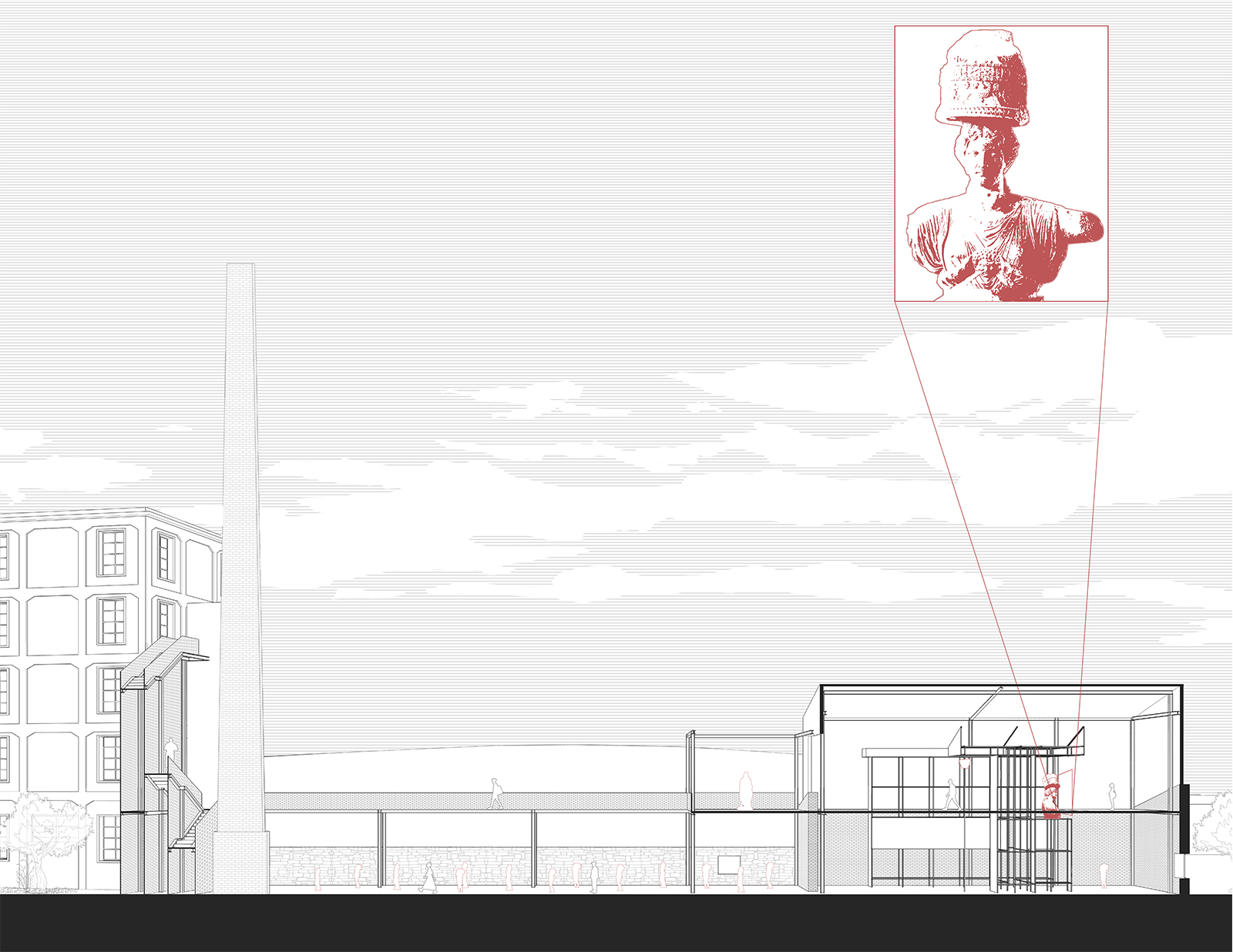
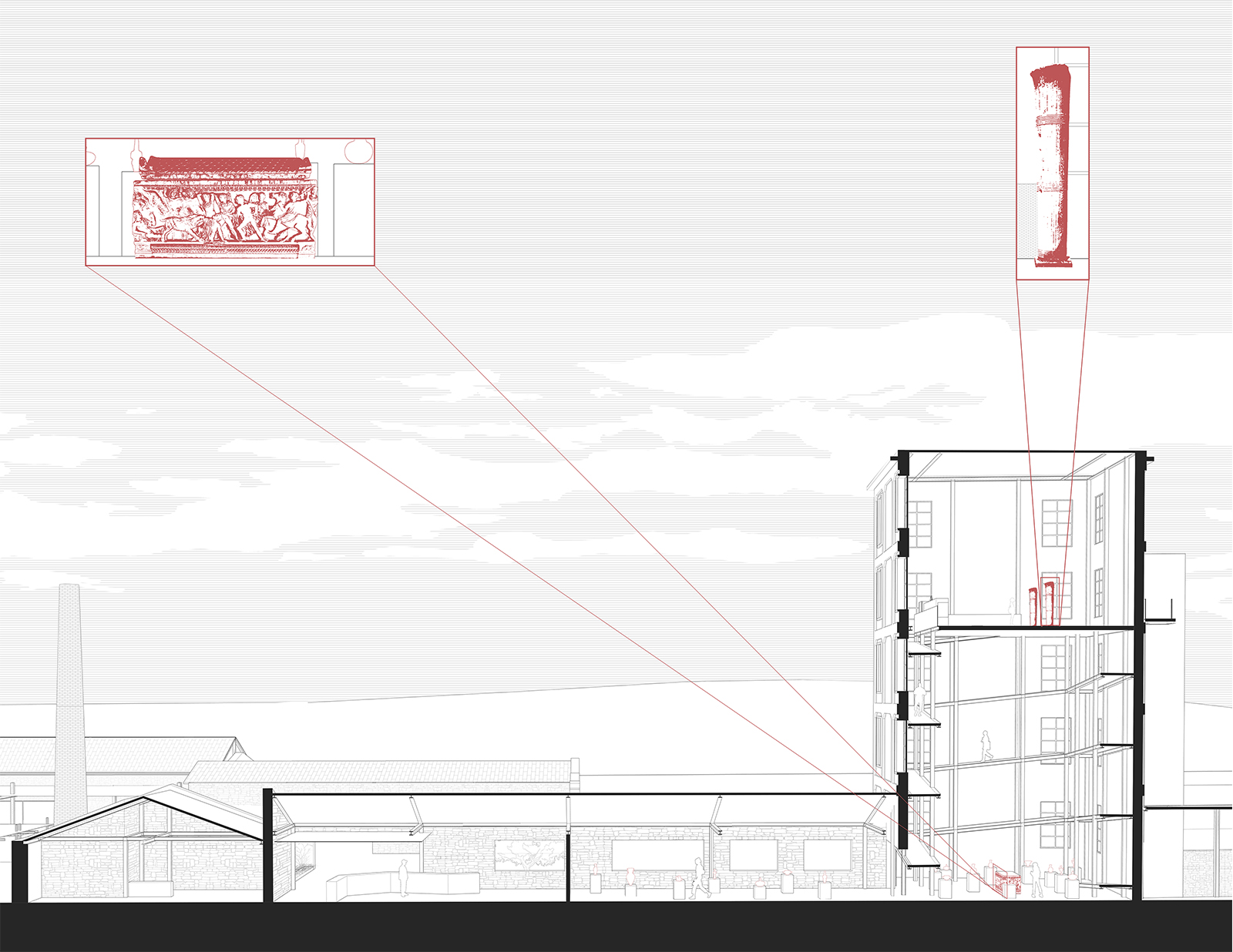
Continuing their tour, visitors cross a bridge and arrive at the hall dedicated to the city.
The journey leads to the Small Propylaea hall, where they can observe the Eleusinian Caryatids up close, at eye level.
The Small Propylaea are abstractly represented, giving a sense of their original scale. A long corridor extends through the Propylaea, leading above a “plaza,” which served as the meeting point for the initiates and the location for the Mystery rituals.
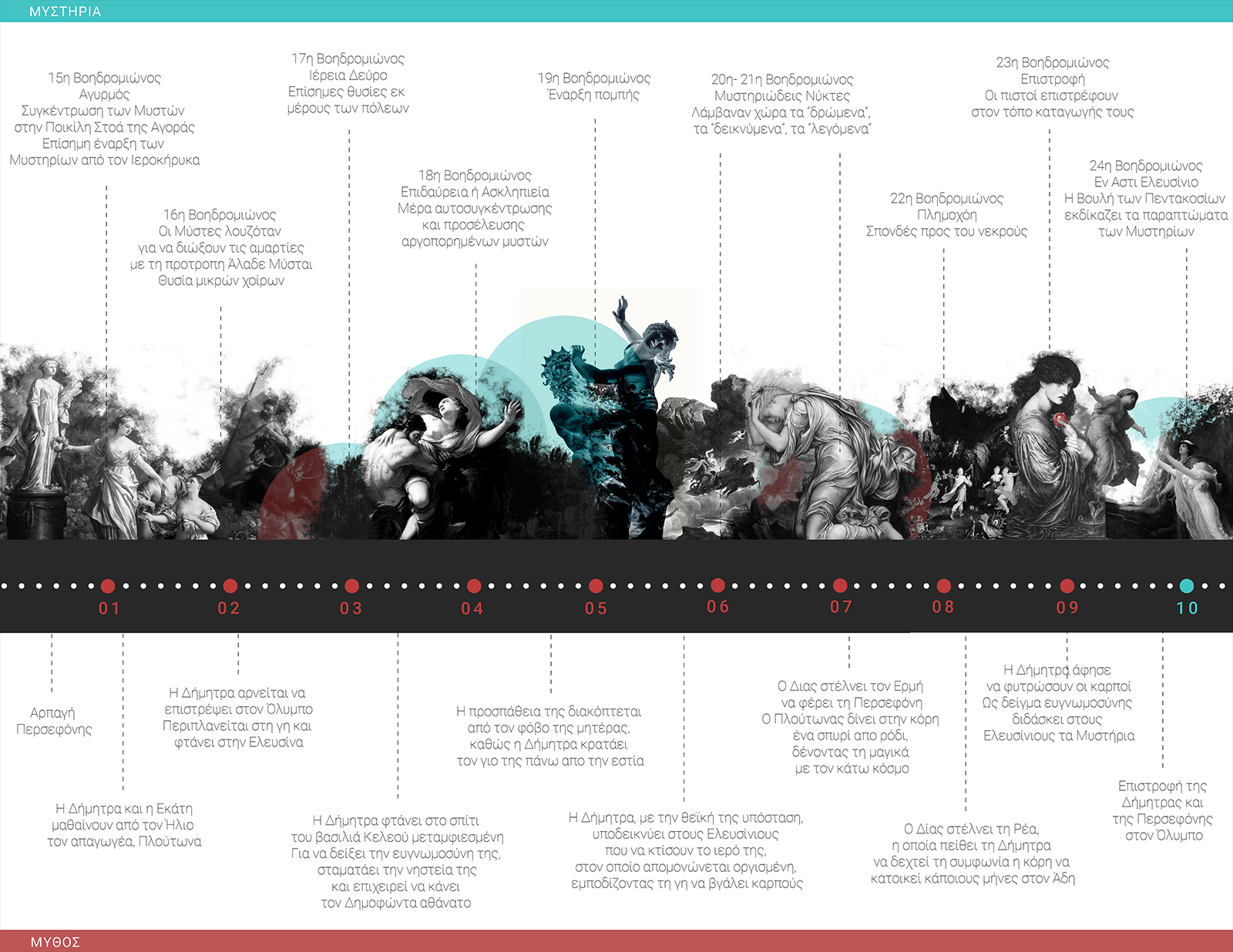
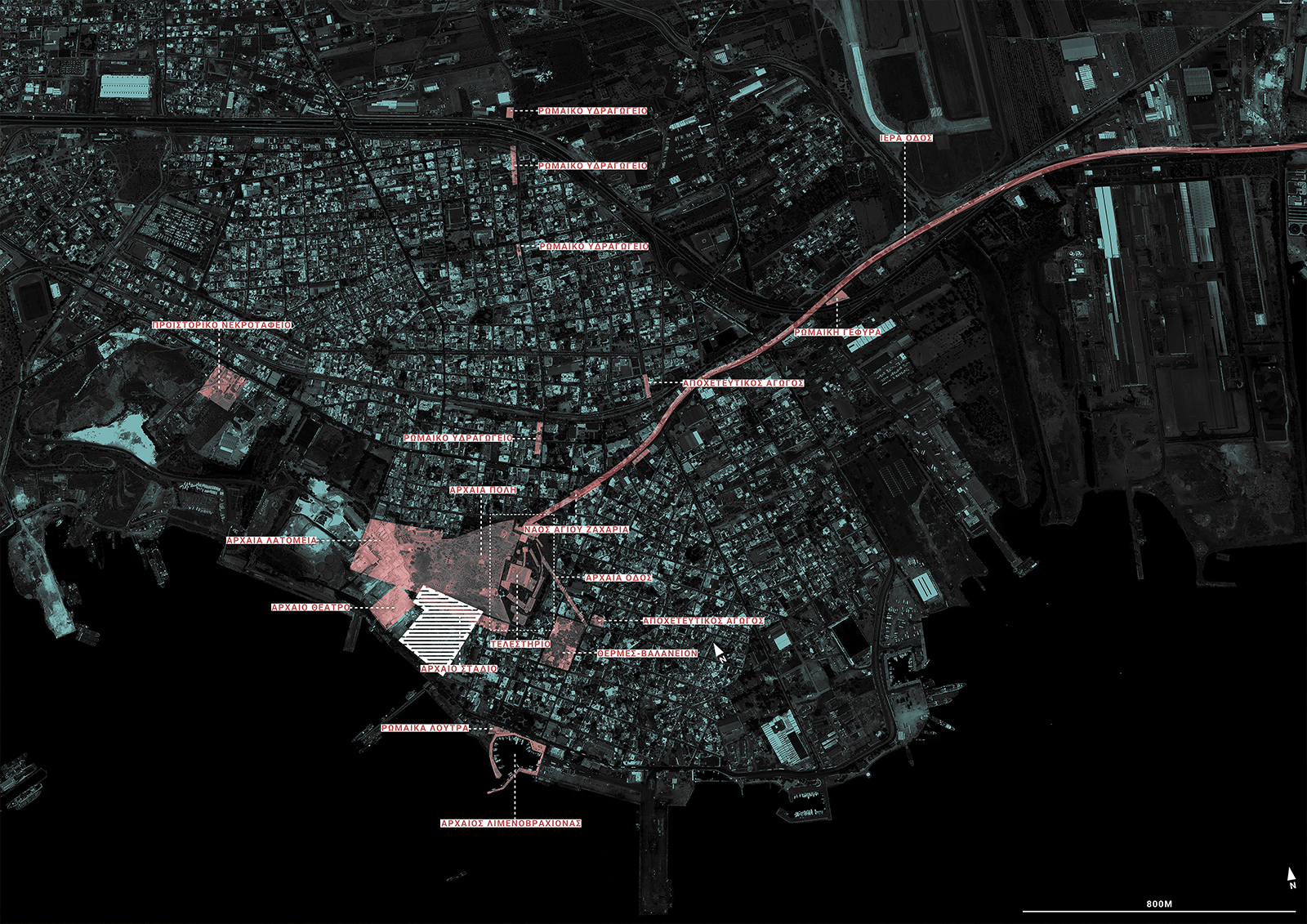
From this point, visitors can ascend toward the Telesterion hall, which is in the tallest part of the industrial complex. This dark hall is spatially reminiscent of the ancient Telesterion, illuminated by sudden beams of light—echoing how the Hierophant revealed the sacred objects to the initiates.

By this point, visitors have reached the day of initiation. Having completed it, they begin their descent via a ramp.
On the ground floor of the building lies the final hall, dedicated to the dead. In this space, funerary offerings are arranged in a grid, allowing visitors to explore them closely.
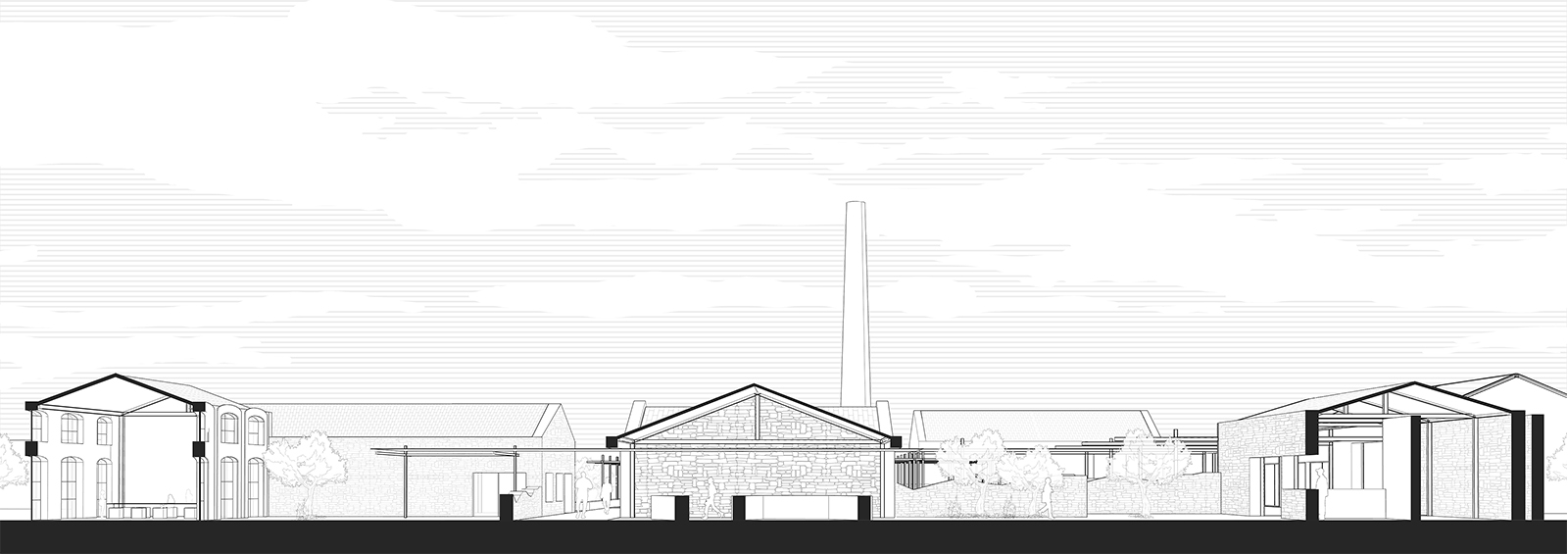
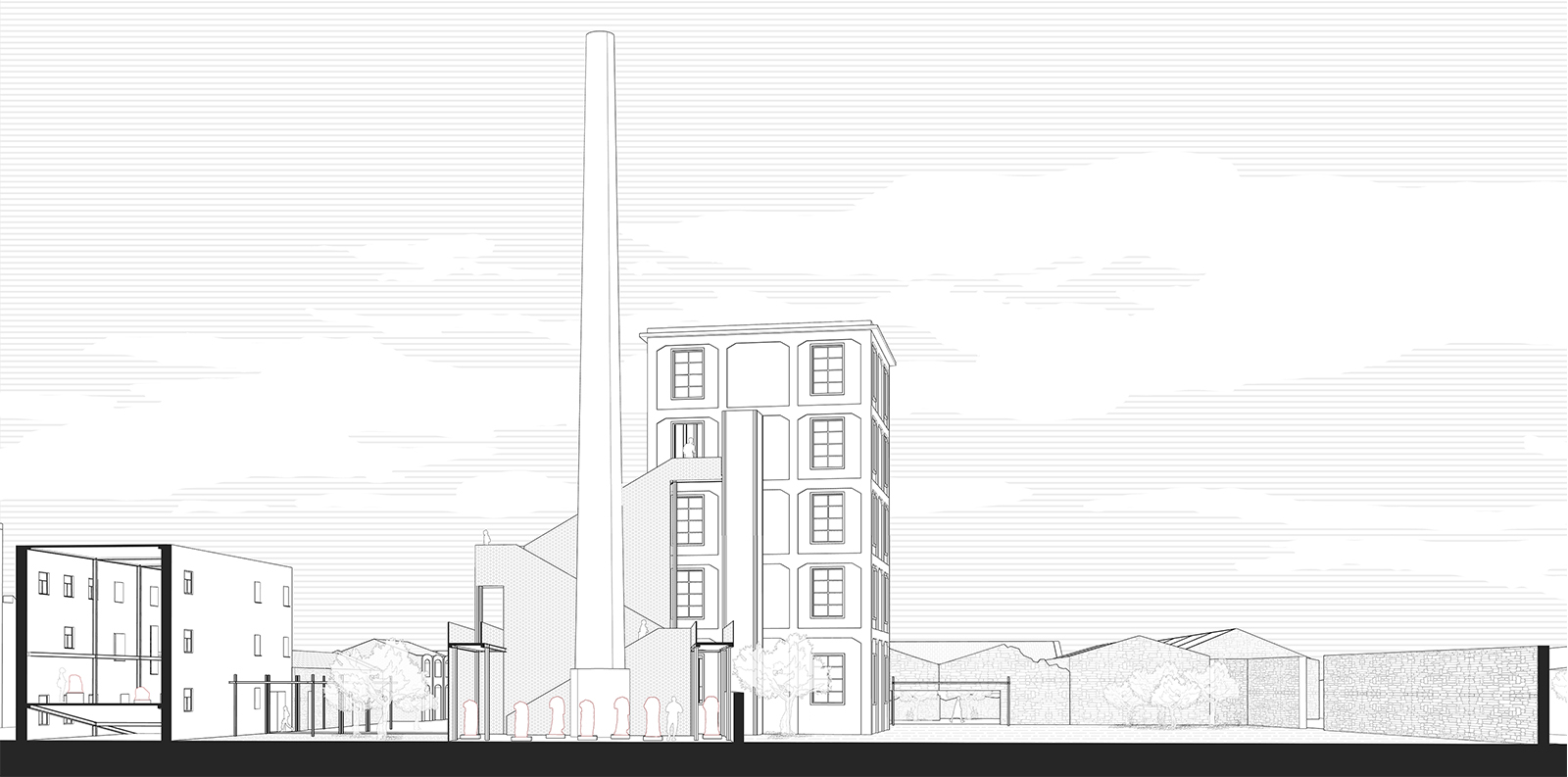
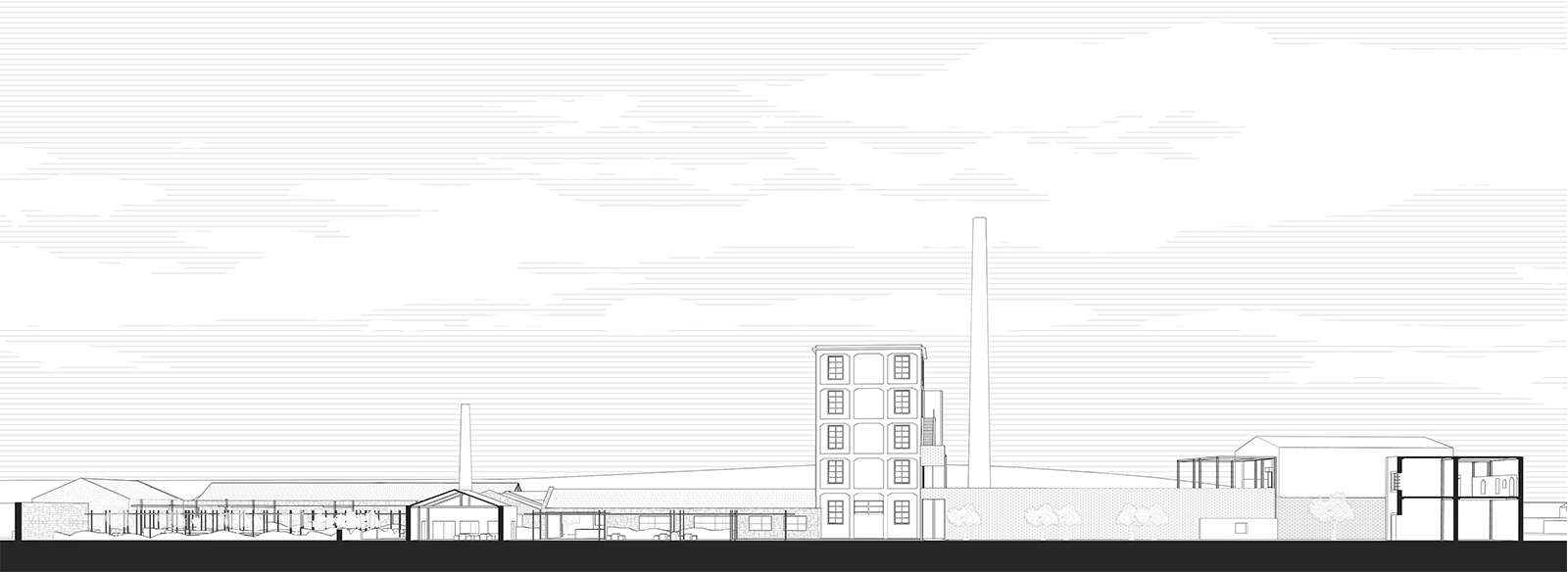
At the end of the exhibition there is free access hall. It presents the overall history of Eleusis, from antiquity to present day.
It becomes evident that the city has been a meeting point for people across centuries.
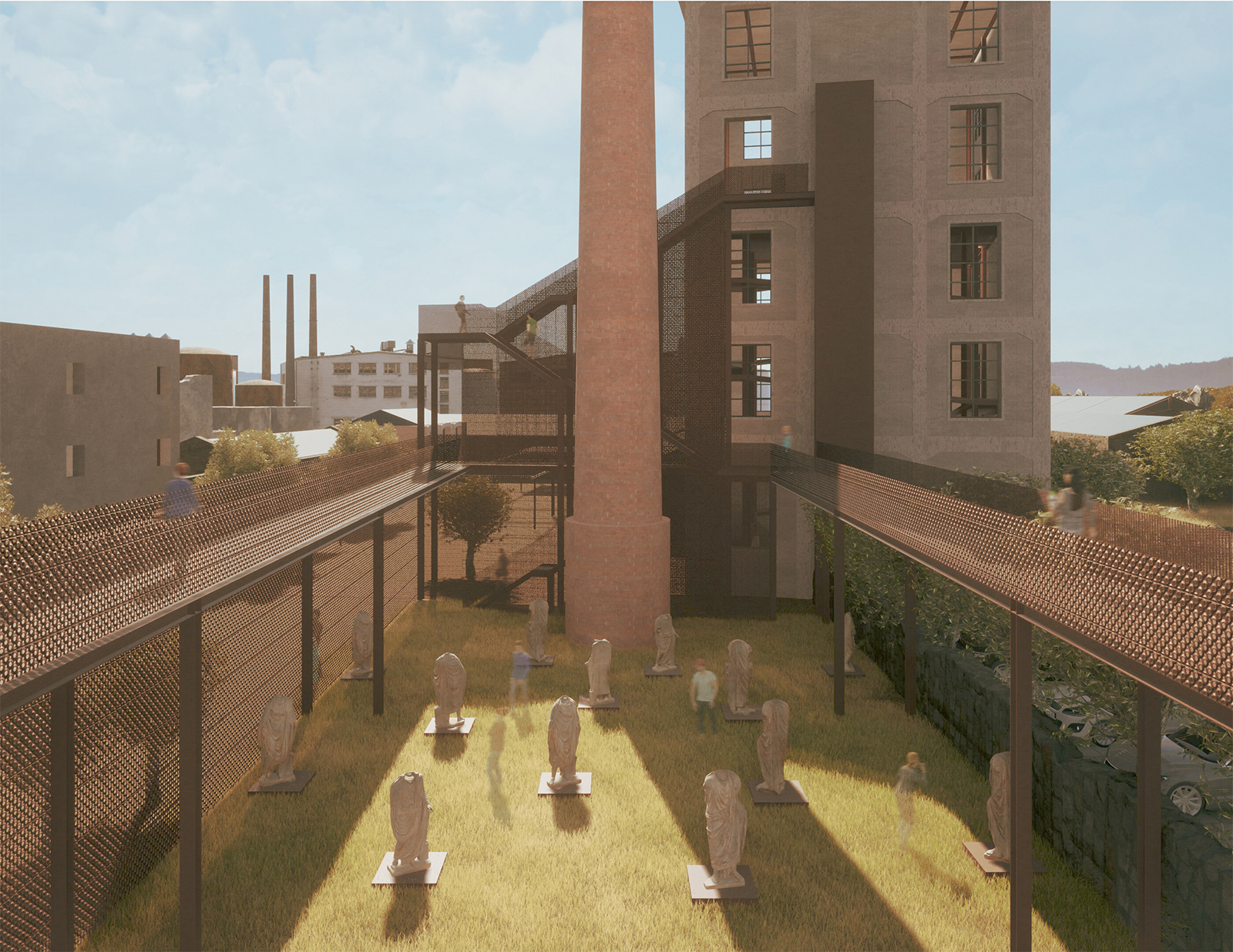
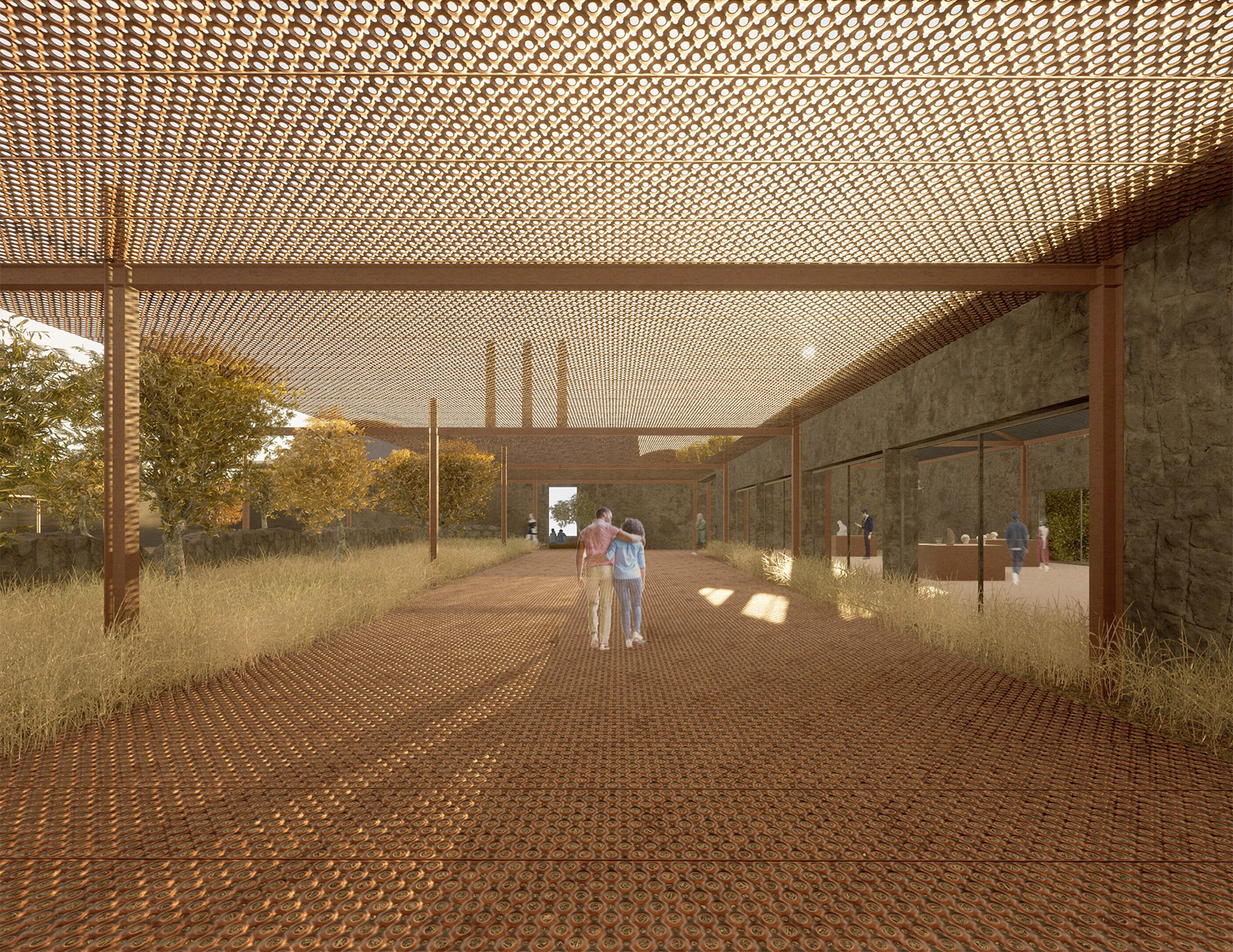
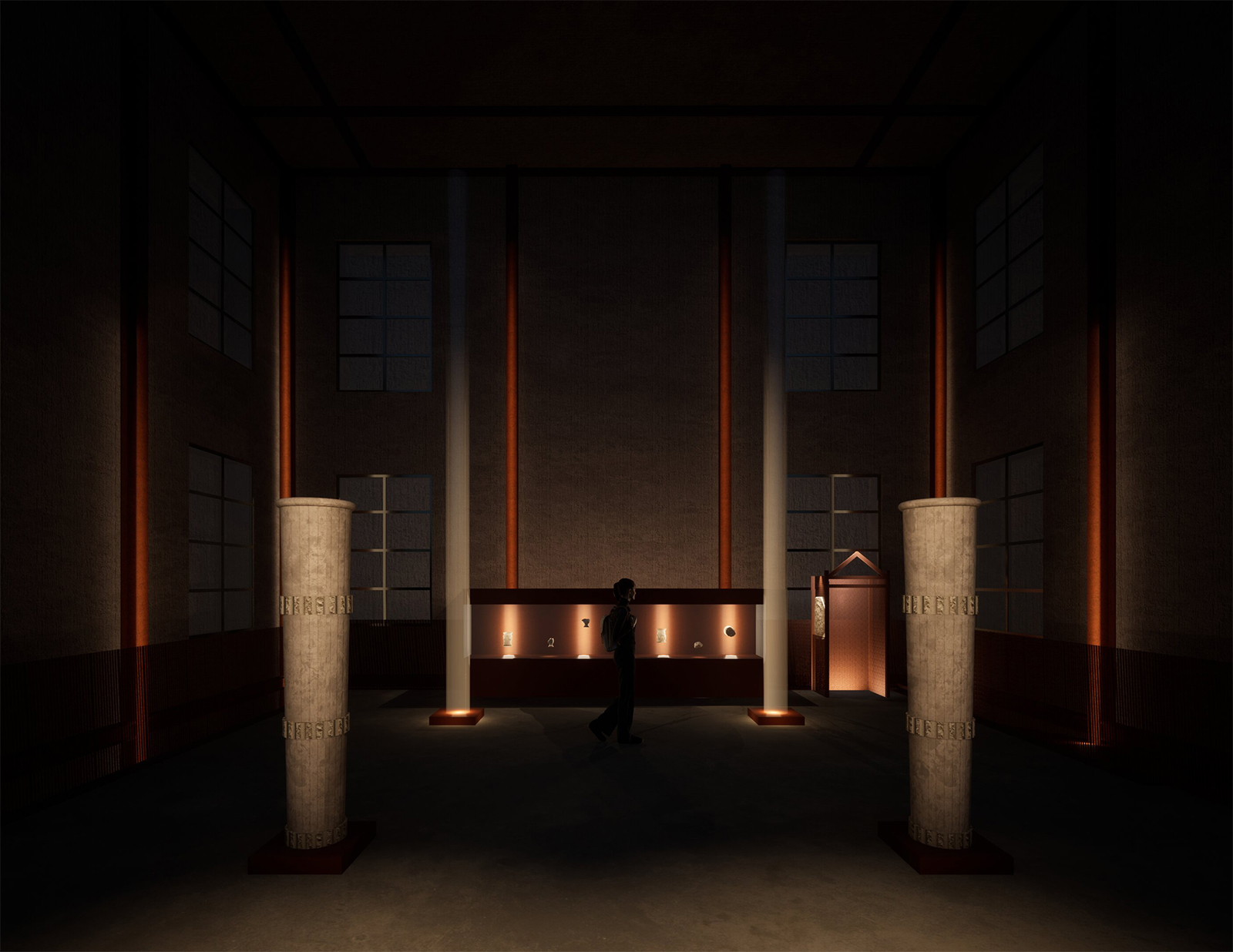
Facts & Credits
Project title Museum of the City of Eleusis
Type Diploma Thesis
Students Drakos Michail, Stampouli Elisavet
Supervisors Giannisis Dimitrios, Tzortzi Kali
University School of Architecture, University of Patras
Text by the author
READ ALSO: Ανάπλαση πρώην στρατοπέδου Αγίας Παρασκευής - Κέντρο πολιτιστικών εγκαταστάσεων αναψυχής και ευεξίας | Διπλωματική εργασία του Ελευθέριου Οδυσσέα Μπουραντά
